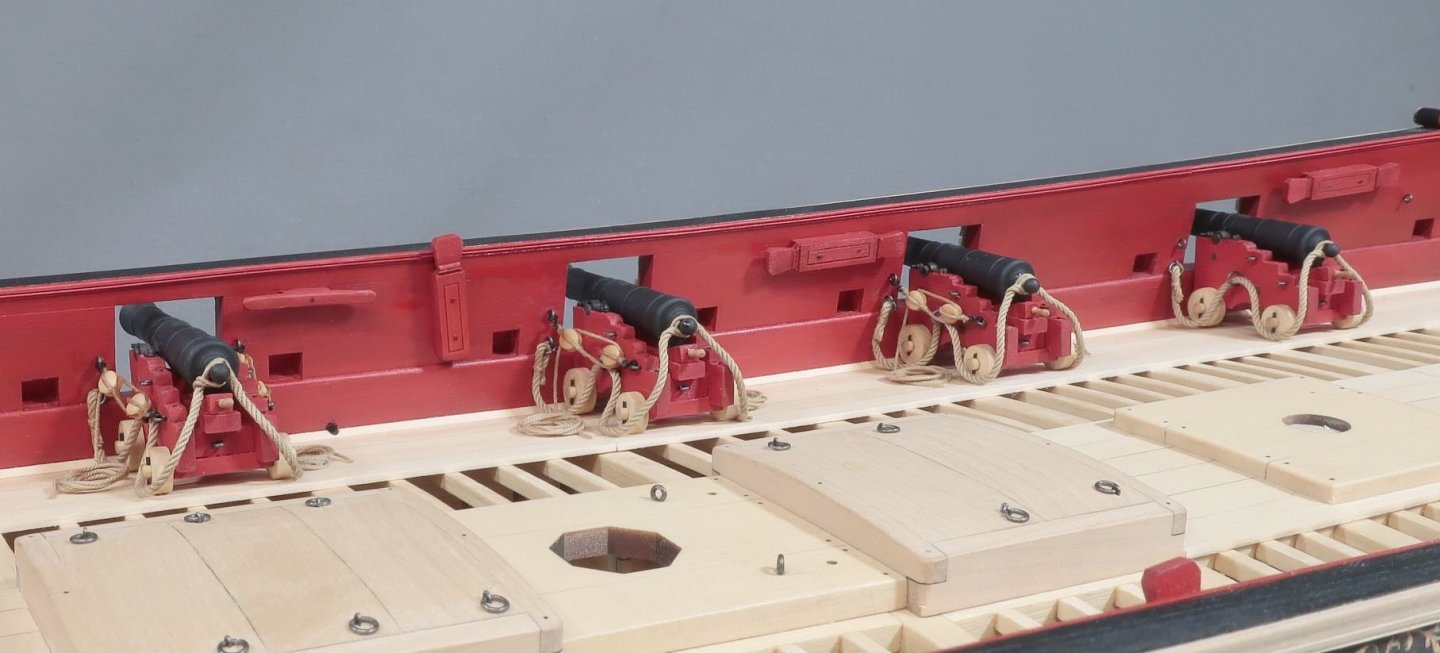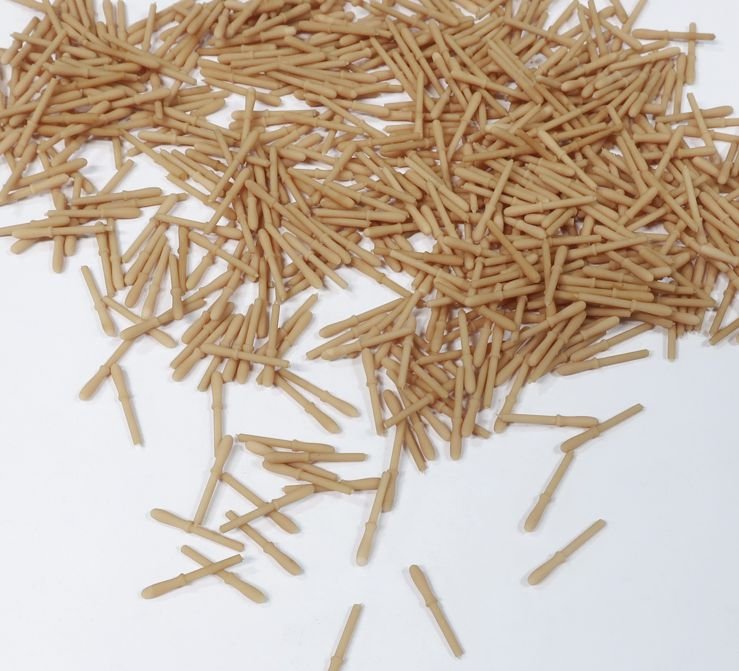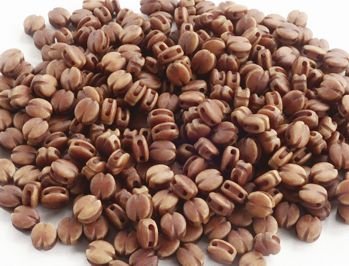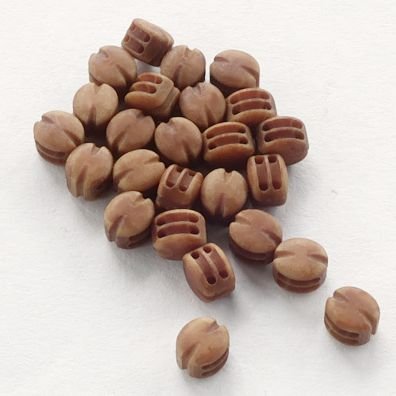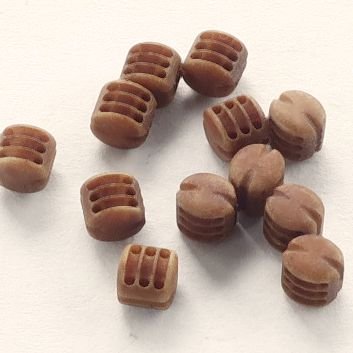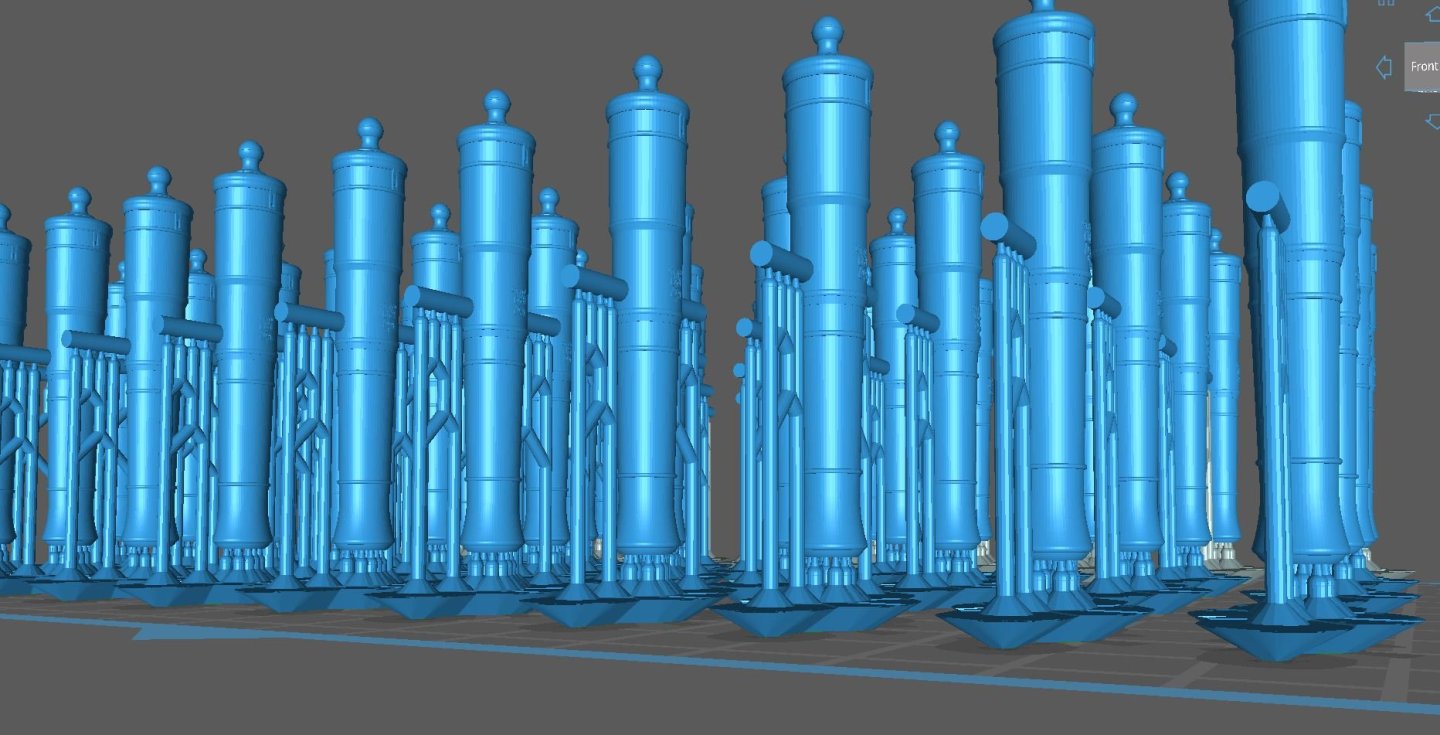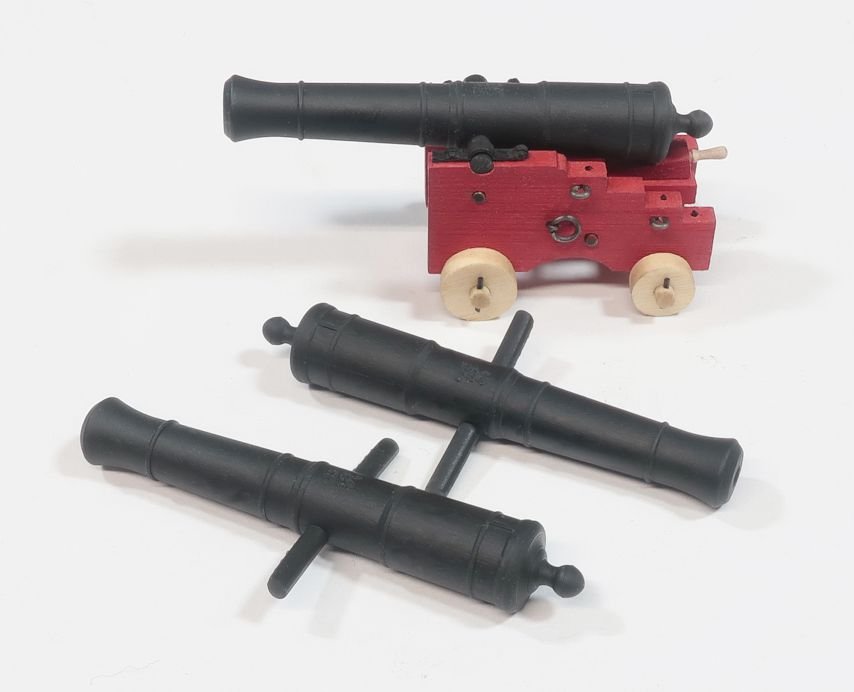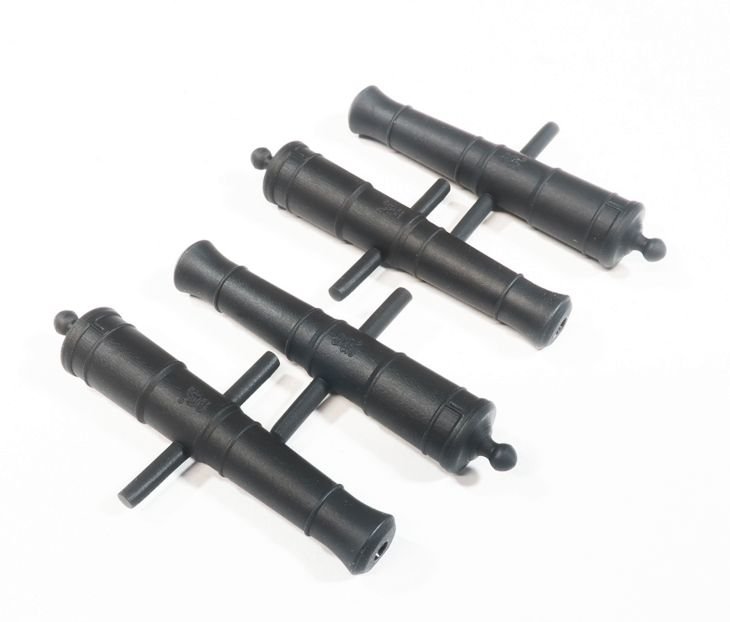-
Posts
9,660 -
Joined
-
Last visited
Content Type
Profiles
Forums
Gallery
Events
Everything posted by Chuck
-
Not that I have tried yet...and I have tried many. The extra strong stuff is not rigid. It bends too much and is way too flexible. It doesnt break but not what we need. I am sure there may be stuff out there but I just havent found it yet. Since I have so much to 3D print already those are on the backburner for the future after everything else gets done.
-
Lovely model. ....and a wonderful display.
- 131 replies
-
- Medway Longboat
- Syren Ship Model Company
-
(and 1 more)
Tagged with:
-
Still around....and trying to work on Speedwell while making blocks and rope inventory. I am going to rig the last cannon on the starboard side...if it kills me. Then on to the port side. I replaced the barrels with the 3D printed versions and thus they needed re-rigging again. But I am back on track...more to come soon. .055 tan breech line and 5/32" single blocks. I am going with the boxwood color 3D printed blocks on this model. Chuck
-

HM Cutter Cheerful 1806 by Erik W - 1:48 scale
Chuck replied to Erik W's topic in - Build logs for subjects built 1801 - 1850
Amost done with that….its not my favorite thing either….then its on to more fun bits. Lovely work also. -

Wipe On Poly Techniques
Chuck replied to Freebird's topic in Painting, finishing and weathering products and techniques
I am bot 100% sure but I think its the same stuff that I use and just rebranded as “warm satin”. I am using the same now as I can no linger find just satin and I cant tell the difference at all. Its exactly the same stuff in my opinion. -
Thank you…I will certainly be using them on my models and I consider myself a traditionalist. They look that good. They are getting crapped on pretty badly on the SOS forum by the usual bunch though. But I think that has more to do with who actually makes them. They keep deleting any pictures of them that my customers post over there which is kind of funny. But I think as folks use them they will come around.
-
This week I will be starting to make the darker "Swiss Pear" colored rigging blocks. If this is your preference then watch my store for the next few days as they start to appear. Same low low price as the natural "boxwood" and yes half the price of other after market blocks that quite frankly are not as good in my opinion. These are 5/32" singles and doubles. First batch of these off the printer. Chuck
-
Thank you Ron. I am now updating the guns on my Speedwell Carriages. These are the new 3D printed cannon from the file you created. They look fantastic. The surface quality is better than I could have ever expected. If you have a 3D printer it is well worth the 5 hours to print these. I have an Elegoo Saturn Ultra printer 12K. You guys should take advantage of Ron's hard work and generosity here.
-
Here is a test print run of an Armstrong Fredrick which Ron (thibaultron) sent me. Its a lovely cannon and prints very nicely. Ron has posted the stl files for these for everyone to print in our 3D printing forum area. I am very thankful to Ron. I will be selling these in my shop with his permission to anyone who does not wish to go down the 3d printing rabbit hole. These are printed in Gray/black resin. They are hard to photograph but hopefully you can see the royal monogram on the barrels and vent hole. The trunnion pin is also extra long so it will fit any carriage. Just snip off the excess and sand it flat. I know you guys sometime buy barrels to fit the carriages supplied by the kits you are building. Just in case.
About us
Modelshipworld - Advancing Ship Modeling through Research
SSL Secured
Your security is important for us so this Website is SSL-Secured
NRG Mailing Address
Nautical Research Guild
237 South Lincoln Street
Westmont IL, 60559-1917
Model Ship World ® and the MSW logo are Registered Trademarks, and belong to the Nautical Research Guild (United States Patent and Trademark Office: No. 6,929,264 & No. 6,929,274, registered Dec. 20, 2022)
Helpful Links
About the NRG
If you enjoy building ship models that are historically accurate as well as beautiful, then The Nautical Research Guild (NRG) is just right for you.
The Guild is a non-profit educational organization whose mission is to “Advance Ship Modeling Through Research”. We provide support to our members in their efforts to raise the quality of their model ships.
The Nautical Research Guild has published our world-renowned quarterly magazine, The Nautical Research Journal, since 1955. The pages of the Journal are full of articles by accomplished ship modelers who show you how they create those exquisite details on their models, and by maritime historians who show you the correct details to build. The Journal is available in both print and digital editions. Go to the NRG web site (www.thenrg.org) to download a complimentary digital copy of the Journal. The NRG also publishes plan sets, books and compilations of back issues of the Journal and the former Ships in Scale and Model Ship Builder magazines.





